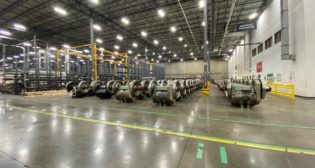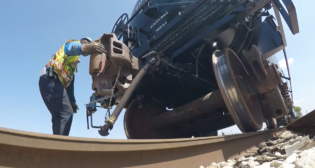
Freight car demand “significantly weakened”: Economic Planning Associates
Written by William C. Vantuono, Editor-in-ChiefRailcar demand “has weakened significantly in this year’s opening quarter and backlogs have dropped to only 95,038 cars,” according to the most recent report issued by Economic Planning Associates. The smaller backlog represents 5.6 quarters (roughly 17 months, through November 2017) of assemblies at current rates.
“The railroads will shoulder a heavy commodities burden this year,” EPA said. “Coal and petroleum loadings have faltered considerably this year and will be slow in recovery. Intermodal traffic has also been weak. On a brighter side, we expect some improvement in grain, motor vehicles and chemical movements as we proceed through 2016 and into 2017.”
Based on significant boxcar backlogs, EPA expects an acceleration in boxcar assemblies that will result in deliveries of 3,000 units this year and 3,500 cars in 2017.
Due to the strength in current backlogs and the anticipation of continued growth in the corn-to-ethanol process that will keep DDG (distiller’s dried grain) demand strong, EPA predicts deliveries of some 9,000 hi-cube covered hoppers this year; 7,500 units in 2017. From 2018 through 2021, deliveries will be in the range of 4,000-5,000 cars per year. Given the high backlogs and strong first-quarter assemblies, EPA is raising 2016 medium-cube covered hopper deliveries to 8,000 cars this year. After 6,500 cars are assembled in 2017, EPA expects deliveries of 6,000 per year from 2018 through 2021. Based on assemblies to date and industry reports of a stretching out of deliveries by customers, EPA expects deliveries of only 6,000 small-cube covered hoppers both this year and next year.
Demand for coal cars “is nonexistent,” EPA said. “The 400 steel-bodied hopper cars ordered in the first quarter are for ore and aggregate services, and there were no orders for the aluminum-bodied cars generally used for coal movements.”
The current energy environment “is sluggish, at best, and we noted a slowing in orders and assemblies of tank cars,” EPA said. “As a result, we are lowering our 2016 tank car deliveries estimate from 30,000 to 20,000,” a 33% reduction.
Due to the weakness in coal cars and lower orders and backlogs for other car types, EPA has lowered its 2016 deliveries estimate to 60,300 cars and its 2017 projection to 47,300 units. After 44,000 thousand cars are assembled in 2018, deliveries will rise gradually to an annual level of 54,500 cars in 2021, EPA said.



